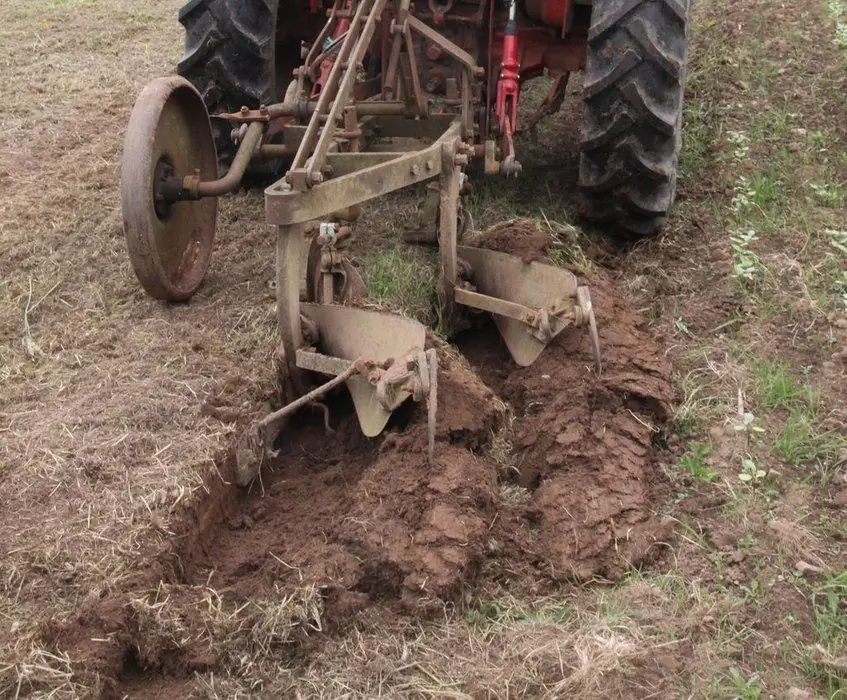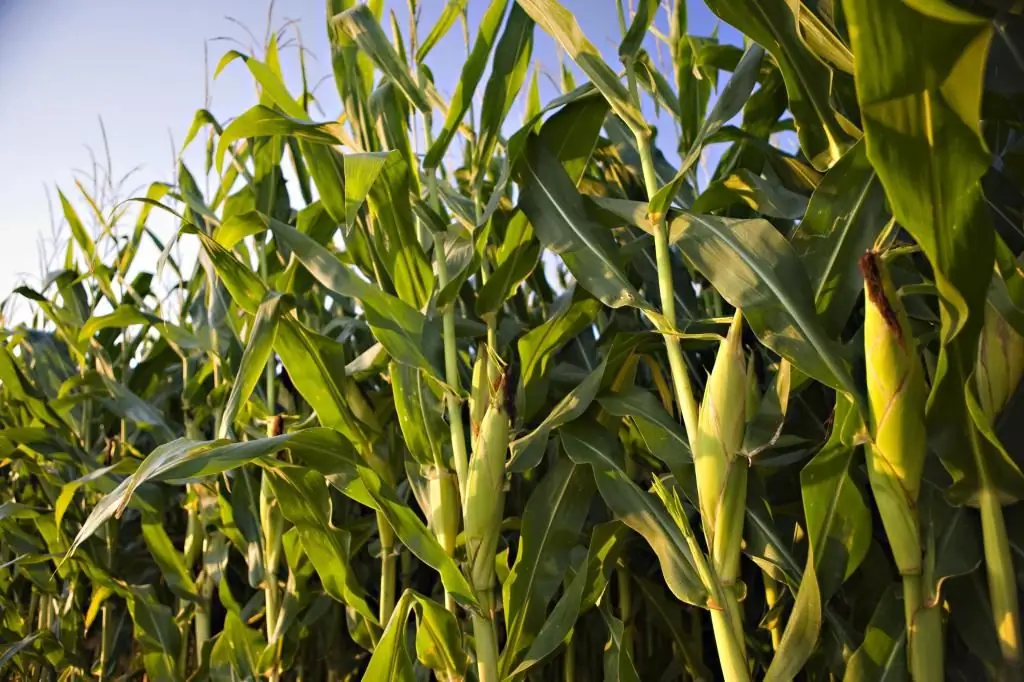2026 Author: Howard Calhoun | [email protected]. Last modified: 2025-01-24 13:10:41
Flax people began to cultivate more than 7 thousand years ago. In Russia, this agricultural crop was recognized under Peter I. Today, it is very common in our country. Oil flax is widely used in industry mainly for the production of technical oil. Cake and meal from this plant are a valuable feed with a high content of vegetable protein, which can be used when growing any kind of farm animals. The technology of oil flax cultivation, like any other crop, of course, has its own characteristics.
Biological characteristics
This crop is grown in our country, because it likes a dry climate, mainly in the steppe regions. Unlike the same common flax or fiber flax, the oilseed variety is more thermophilic. Therefore, in such areas you can get the largest yields of this crop. Quite often, oil flax fields are sown in the south of the forest-steppe zone.
The peculiarity of this culture in the first place is that at the initial stage it is very slowdevelops. That is, immediately after planting, seedlings can clog weeds. Technologies for the cultivation of oil flax, of course, were developed taking into account, among other things, this feature of it.

The root system of this plant is pivotal, but it does not go too deep into the ground - about 40 cm. Therefore, the top layer of soil on the field with this crop should be nutritious. In the development process, flax goes through 5 stages:
- seedlings with cotyledon leaves;
- Christmas trees - the phase from the appearance of true leaves to the budding phase;
- budding;
- flowering;
- ripening.
In nature, there are also perennial varieties of flax. However, annuals of this family are mainly cultivated in the fields. Oil flax also belongs to this group of crops.
The growing season of this plant lasts, depending on the variety and the climate of a particular region, about 90-110 days. Seeds of this culture begin to germinate at a temperature of +5 °C. When the earth warms up at a planting depth of up to +8 ° C, flax germination begins on the 6-7th day. At lower temperatures, this crop emerges about 2 weeks after planting.
Growth Features
This plant develops most quickly in the third phase. After the flax flowers give ovaries and fruit formation begins, the growth of this crop stops. In the phase of seed ripening, lignification of the stem gradually begins to occur.

Take care of flaxhard mainly only in the first two periods of development. At this time, active weed control is carried out in the fields with the plant.
When the flax flowers begin to bloom and subsequently, planting care becomes easier. The features of this culture include drought resistance. Oilseed flax needs about 140% of its own weight during the growing season, which is much less than many other agricultural plants. The highest need for watering in this crop occurs during the laying of flower tubercles and in the next 2-3 weeks before the formation of boxes. Insufficient moisture during this period can lead to a significant reduction in yield.
To various kinds of pests and diseases, this plant, like common flax (fiber), is considered resistant. Due to infection of plantings with harmful microorganisms or insects, this plant almost never loses crops.
Oil flax breeding
This culture, therefore, is quite common in Russia. Breeding work with it in our country, as well as in the world, therefore, is quite active. When breeding new varieties, specialists can focus on increasing yields, resistance to adverse environmental factors, or, for example, changing the fatty acid composition of seeds for the better.
The main areas for growing oilseed flax in Russia are thus located in the forest-steppe and steppe zones. In such regions, the following subspecies of the crop can be grown:
- Mediterranean;
- intermediate;
- Eurasian.
The best varieties of oil flax are considered to be:
- Brook;
- Torch;
- K-6;
- Voronezh;
- Siberian;
Tomsky-9 and VNIIMK-620 flax are also very often planted in the fields. All these varieties are well known and cultivated in the fields in Russia for a long time. But of course, breeders never stopped working with this common crop. In the recent past, they have bred, for example, a new variety of oilseed flax Kinelsky-2000. This plant is super resistant to drought, lodging and shedding. Also, friendly ripening is considered a plus of the variety.

Precursors
Of course, the technology of oil flax cultivation, like any other agricultural crop, necessarily provides for a certain crop rotation. Since this plant at the initial stage of development can be clogged with weeds, it, of course, first of all requires clean fields. Excellent predecessors for oil flax are:
- annual fodder;
- wheat on pure fallow;
- winter crops.
During wet years, this plant is often planted in a layer of perennial grasses, plowed up after the first mowing and semi-fallow. In dry years, this crop is best suited for bare fallow, fertilized with superphosphate at a rate of 30 kg/ha.
What kind of soil is suitable
To the composition of the land in the fields of flax - culture, as already mentioned, is relativelydemanding. It grows best on chernozem and chestnut soils with good moisture and breathability and plenty of nutrients. It will not be possible to get a good harvest of this crop on wormy, light sandy and swampy soil.
Autumn field processing
Since oilseed flax does not belong to perennial crops, it is sown in the fields, of course, every spring. In autumn, after the predecessor, the soil under this plant is subjected to autumn cultivation, which can be moldboard or non-moldboard. The specific method is chosen depending on the climatic conditions of this particular region.
The technology for the cultivation of oil flax was developed, among other things, taking into account the fact that the seeds of this crop are very small. If there are irregularities in the field, they subsequently rise very unevenly. Therefore, the soil after the main processing in the fall is also carefully leveled. This allows, among other things, to reduce crop losses during harvesting. This procedure is carried out using special equipment at an angle of 45 degrees to the direction of plowing.
Spring tillage
At this time, on the fields allotted for flax on the farm, they produce:
- early spring harrowing;
- cultivation to the seeding depth.
After sowing flax, the soil is rolled with needle rollers. This contributes to a more even distribution of planting material on the field and the appearance of friendly seedlings. Since flax can suffer greatly from weeds in the initial stages of development, pre-sowing treatment forthis crop is often combined with the application of herbicides, universal or special.

Improve soil composition before planting
Since flax loves nutritious soil, fertilizers can be applied in addition to herbicides before sowing its seeds in the fields. During the autumn autumn plowing, the land for this crop is improved with phosphorus-potassium compounds. In the spring, during pre-sowing preparation, nitrogen fertilizers are applied by grain-fertilizer seeders. The dosages of such formulations may not be the same for different regions. In any case, applying too much nitrogen fertilizer to flax fields is highly discouraged. This can lead to too rapid development of the green mass of oil flax and, ultimately, to its lodging. Harvesting plants in this case, of course, will be accompanied by significant losses.
Date of planting
In most regions of Russia, the planting of this crop begins in the second decade of May. In any case, the soil should already warm up to 8-10 °C when sowing at the embedding depth. The optimum ground temperature for planting flax is considered to be 10-12 ° C. During this period, most types of weeds begin to actively sprout in the fields. During presowing cultivation, up to 90% of them are destroyed. Accordingly, in the future, weeds do not clog plantings.
Oil flax cultivation technology: seeding
This crop can be planted on farms in a row way (15 cm) or narrow row (7.5 cm). In seed plantings, the row spacing is left at 45 cm. On average, the seeding rate of oil flax seedsis 7 million per 1 ha. At the same time, in the forest-steppe zone, more planting material is used during sowing (up to 8 million), and less in the steppe zone (about 6 million). The depth of seed placement is chosen depending on the condition of the soil. They are buried in moist soil by 3-4 cm, in dried soil - by 5-6 cm. In no case should the planting material of this crop be buried too deep. This is fraught with the death of some of the seedlings.

Although flax is weakly affected by various kinds of diseases, before sowing, its seeds are treated to prevent fusarium, polysporosis, etc. with drugs such as:
- TMTD;
- Agrosil;
- "Wincite", etc.
Care during the growing season
In the early years, special attention in the cultivation of oilseed flax is given to weed control. In the herringbone phase, fields with this crop are treated with herbicides. At the same time, such funds are applied when the height of the plants reaches 10-15 cm. As herbicides in fields with flax, they are usually used:
- "Super Furore";
- Fusilade;
- "Bazagram", etc.
Sometimes seedlings of this crop can be affected by flax flea. From this pest, plantings are treated with Decis, Splender, Bi-58.
Linen harvesting
Unfortunately, even with the exact observance of all the required technologies for sowing and care, this crop usually does not ripen too evenly. Therefore, flax harvesting is a very complicated and responsible procedure. During the ripening of the seeds of this plant, its stems are still very wet. With direct combining, they are respectively wound on the nodes of harvesting equipment. Therefore, farms in most cases use a separate method of harvesting oil flax.
This procedure is performed with the same technique that is used for cereals. They begin to collect at the moment when the number of ripe boxes on the field is 75%. Harvesters with well-adjusted blade strokes and reinforced segments are used as attachments for harvesting flax.
When using the method of separate harvesting, the windrows are threshed when they dry well and the seed moisture drops to 12%. Drying of plants when using this technology should not be allowed. This can lead to an increase in the percentage of injured seeds.

Heaps of flax entering the current are subjected to pre-cleaning. Wet plant residues should not be allowed to remain in them. This can lead to self-heating of the mass and damage to the seeds.
In some cases, direct combining can also be used to harvest flax for oil. This technology is used on fields that are clean of weeds with a very uniform ripening of the crop. In this case, there will also be losses during harvesting, but not too significant.
Seed drying
When using a separate two-phase method of harvesting flax, this procedure is usually not performed. They do it only when the seeds in the rolls, for some reason, still do not dry out to the required 12%. Drying in this caseperform at a coolant temperature of a maximum of 55-56 ° C. The oil flax seeds themselves, when performing this operation, according to the rules, should not be heated above 35-45 ° C. The mass is usually cleaned before drying. There should not be large straw impurities in it, as this is fraught with its spontaneous combustion. And this, of course, can easily even lead to a fire in the storage place.

Features of cleaning on straws
The national economic value of oil flax is quite multifaceted. Basically, of course, this crop is grown to produce technical oil, cake and meal. However, such flax in some cases in industry can be used for another purpose - for the production of fiber. When grown for this purpose, harvesting is carried out according to a special technology. Plants in this case are cut as low as possible. At the same time, harvesters without skid shoes are used in the fields when growing flax for fiber in autumn.
If a crop is grown simultaneously to obtain fiber and seeds, it is threshed with a single-drum combine. When using such equipment, the straw is less damaged.
To obtain tow, flax is subjected to trust formation. That is, the plants are spread across the field during threshing by a combine. In the event that flax, using this technique, does not mature to frost, it is left on the ground under snow until spring. The harvested trust is subsequently transported to flax processing enterprises.
Recommended:
Corn silage: cultivation, harvesting and storage technology

Corn silage is a valuable feed that can form the basis of the diet of various animals and birds. However, its harvesting is a complex process that will be useful for many agricultural workers to understand
Hoskold method, Ring method, Inwood method - ways to recover investment capital

When a person invests his own money in an income-generating object, he expects not only to receive profit from the invested capital, but also to fully repay it. This can be done through resale or by obtaining such profits that not only bring interest, but also gradually return investments
Spring barley: varieties, sowing dates, cultivation, economic importance

Spring barley is one of the most important food, fodder and industrial crops. Today we will get acquainted with the main characteristics of this crop and the features of its cultivation
Spring wheat: cultivation technology, features of sowing, cultivation and care

About 35% of all grain plantings on the planet today falls on wheat. In purchases, the share of such grain is 53%. Technologies for growing spring wheat in Russia can be used differently. But when cultivating this crop, crop rotation must be observed and careful preliminary preparation of the soil must be carried out
Corn: cultivation technology, features of planting, cultivation and care

Every one of our compatriots has seen and tasted corn. However, not everyone thinks about how important culture it is. Therefore, tell about it in more detail. We will also dwell briefly on the technology of corn cultivation - it will be very useful for novice farmers to learn about this

